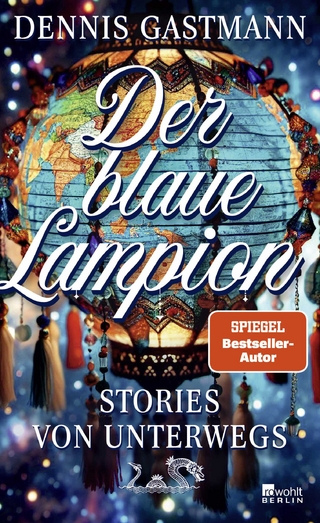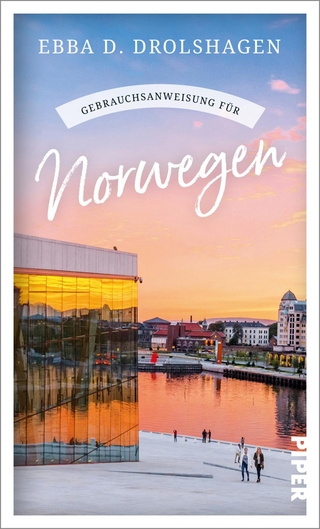
The Malaspina Expedition 1789–1794
Hakluyt Society (Verlag)
978-0-904180-72-5 (ISBN)
Among the voyages of exploration and surveying in the late 18th century, that of Alejandro Malaspina best represents the high ideals and scientific interests of the Enlightenment. Italian-born, Malaspina entered the Spanish navy in 1774. In September 1788 he and fellow-officer José Bustamante submitted a plan to the Ministry of Marine for a voyage of survey and inspection to Spanish territories in the Americas and Philippines. The expedition was to produce hydrographic charts for the use of Spanish merchantmen and warships and to report on the political, economic and defensive state of Spain's overseas possessions. The plan was approved and in July 1789 Malaspina and Bustamante sailed from Cádiz in the purpose-built corvettes, Descubierta and Atrevida. On board the vessels were scientists and artists and an array of the latest surveying and astronomical instruments. The voyage lasted more than five years. On his return Malaspina was promoted Brigadier de la Real Armada, and began work on an account of the voyage in seven volumes to dwarf the narratives of his predecessors in the Pacific such as Cook and Bougainville. Among much else, it would contain sweeping recommendations for reform in the governance of Spain's overseas empire. But Malaspina became involved in political intrigue. In November 1795 he was arrested, stripped of his rank and sentenced to life imprisonment. Although released in 1803, Malaspina spent the last seven years of his life in obscure retirement in Italy. He never resumed work on the great edition, and his journal was not published in Spain until 1885. Only in recent years has a multi-volume edition appeared under the auspices of the Museo Naval, Madrid, that does justice to the achievements of what for long was a forgotten voyage. This first volume of a series of three contains Malaspina's diario or journal from 31 July 1789 to 14 December 1790, newly translated into English, with substantial introduction and commentary. Among the places visited and described are Montevideo, Puerto Deseado, Port Egmont, Puerto San Carlos, ValparaÃso, Callao, Guayaquil and Panamá. Other texts include Malaspina's introduction to his intended edition, and his correspondence with the Minister of the Marine before and during the voyage.
Andrew David served for more than forty years in the Royal Navy, including a period (1961-85) at the Hydrographic Office of the Ministry of Defence. Among his many publications is The Voyage of HMS Herald to Australia and the Pacific 1852-1861 (1995), and he was the chief editor of The Charts and Coastal Views of Captain Cook's Voyages (1988-97). Felipe Fernández-Armesto is Professorial Fellow of Queen Mary, University of London, and a member of the Modern History Faculty of Oxford University. His publications include many papers on maritime, cartographic and early colonial history, and among recent books, Civilisations (2000) and Food: A History (2001). Carlos Novi was from 1972 to 1989 Head of the Spanish Translation Section, and Director with special responsibility for the harmonization of terminology, at the United Nations Maritime Organization (London). After retiring from the IMO in 1989 his life-long interest in naval history became a full-time pursuit. Glyndwr Williams is Emeritus Professor of History at Queen Mary, University of London. His research interests include North American and Pacific exploration history; and among his recent publications are The Great South Sea (1997) and The Prize of all the Oceans (1999). Donald C.Cutter is Emeritus Professor of History at the University of New Mexico. His major interests have been in the Spanish exploration, conquest and settlement of what is today the American West. His interest in Malaspina is long-standing; he has written three books and more than a dozen articles on various aspects of the expedition.
Contents: Foreword; Preface; Translating Malaspina; Introduction; Malaspina's IntroducciA(3)n; Journal of the Voyage: from CA!diz to Montevideo and at Montevideo: From CA!diz to Montevideo; At Montevideo; From Montevideo to Puerto San Carlos de Chiloe: From Montevideo to Puerto Deseado and at Puerto Deseado; From Puerto Deseado to Puerto Egmont; At Puerto Egmont; From Puerto Egmont to Puerto San Carlos de Chiloe; At Puerto San Carlos de Chiloe; From Puerto San Carlos de Chiloe to Coquimbo: From Puerto San Carlos de Chiloe to Talcahuano; At Talcahuano and BahA-a ConcepciA(3)n; From Talcahuano to ValparaA-so and visit by Descubierta to Islas de Juan FernA!ndez; At ValparaA-so and visit to Santiago; From ValparaA-so to Coquimbo; From Coquimbo to Callao: From Coquimbo to Callao and visit by Descubierta to Islas de San Felix; At Callao and visit to Lima; From Callao to Acapulco: From Callao to Guayaquil; At Guayaquil; From Guayaquil to PanamA!; At PanamA!; Appendixes; Works cited.
| Erscheint lt. Verlag | 28.3.2002 |
|---|---|
| Sprache | englisch |
| Maße | 174 x 246 mm |
| Gewicht | 1156 g |
| Themenwelt | Literatur ► Biografien / Erfahrungsberichte |
| Literatur ► Briefe / Tagebücher | |
| Sachbuch/Ratgeber ► Geschichte / Politik | |
| Reisen ► Reiseberichte ► Europa | |
| Reisen ► Reiseberichte ► Nord- / Mittelamerika | |
| Naturwissenschaften ► Geowissenschaften ► Geografie / Kartografie | |
| ISBN-10 | 0-904180-72-7 / 0904180727 |
| ISBN-13 | 978-0-904180-72-5 / 9780904180725 |
| Zustand | Neuware |
| Informationen gemäß Produktsicherheitsverordnung (GPSR) | |
| Haben Sie eine Frage zum Produkt? |
aus dem Bereich


